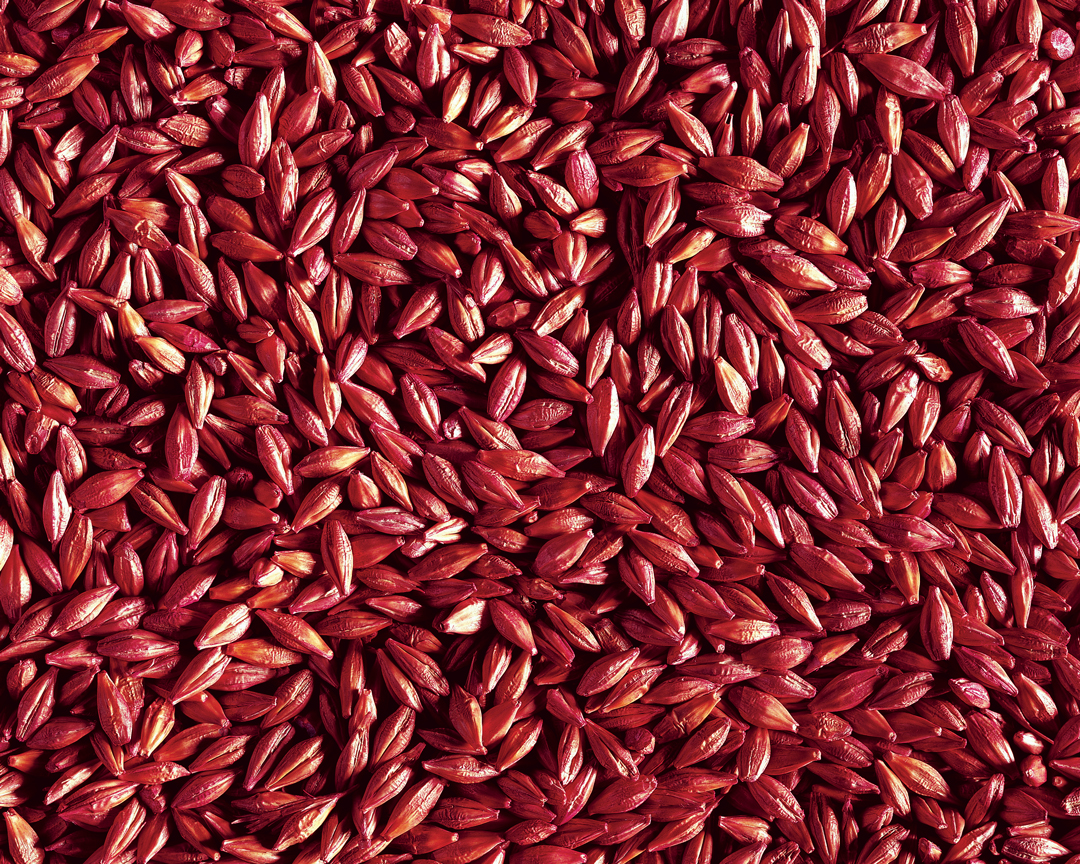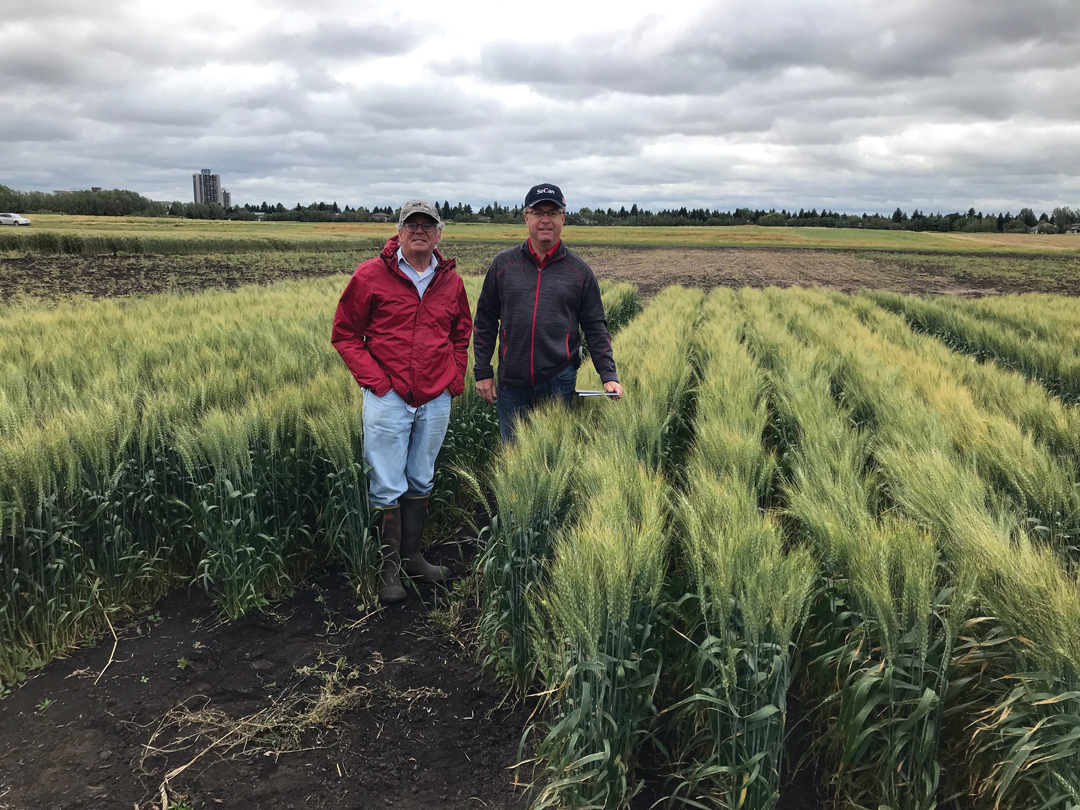SOW WHAT?
BY TREVOR BACQUE • ABOVE PHOTO BY SHUTTERSTOCK
The websites of specialty fertilizer companies now often resemble a love letter to the periodic table of elements. Boron, zinc, manganese, oh my! Each shiny product is designed to sell farmers a nutrient they either didn’t know they needed or simply cannot live without.
It’s part of a growing trend seen more and more when it comes time for a farmer to evaluate their soil biology and determine what additives are needed. It’s suggested they back off on traditional fertilizer rates and insert a unique product in its place to drive either modest or substantial yields. Likewise, various seed-applied coatings also promise worth and improved tilth. All claim net returns no matter how small. So, can it all be worthwhile? How does a farmer avoid stepping over a dollar to pick up a dime with so many options?
Jason Lenz has farmed long enough to know he must temper his excitement. In an industry all about gaining minute advantages to cushion thin margins, he takes a cautious approach. It’s why, in 2014, he started small when he decided to try Awaken ST, a zinc-ammonium acetate nutritional seed treatment from American manufacturer Loveland Products.
At first it was a 40-acre side-by-side test on his hard red spring wheat. Results showed a five bushel per acre advantage through Awaken ST. In a trial the following year he saw about a three-bushel advantage and a 2.5-bushel gain the year after that. The last figure is currently his annual average.
Today, he applies it to all his wheat and barley because all he requires is a one bu/ac jump to break even and anything above that is net gain. Money aside, Lenz farms at Bentley in west-central Alberta where wicked winds are a fact of life. “A heavier, thicker stem helps to reduce lodging,” he said of the improved cereals. “That’s almost as important to us as the yield advantage.”
Another key for Lenz is a head start. “We feel we are getting a quicker emergence of the plant after seeding,” he said, adding his root systems are larger, as well. “What typically takes five to seven days, we’re seeing plants emerge in the four-to-five-day range.” Even one day can make all the difference in Alberta where several recent harvests have been plagued by rain, snow and early frost.
Lenz, like many, treats his seed on farm in a mobile unit and believes he gets an evenness comparable to a commercial applicator. Farmers may opt for commercial seed-treating businesses, which generally can add multiple products onto the seed coat depending on the request.
At Westlock Seed Cleaning Co-op, staff focus on Omex’s manganese-zinc formulation, annually treating anywhere from 32,000 to 39,000 bushels. Manager Wayne Walker said that figure plateaued in the last five years due to a lack of data. “Some people don’t think it does anything. Others are very much in belief that it does give you a yield boost,” he said. “We would like to see more concrete data come out on it.”
Walker noted that when money gets tight, such micronutrients are the first line item to be blacked out. However, he said interest has continued to grow steadily on fungicide and pesticide seed treatments.
For his plant, Walker explained that infrastructure investment would be no issue if it was clear there was a demand, but it’s not. “These additives, they’ve been around for a long time,” he said. “Why is there not more uptake? It’s kind of the same guys over the last few years doing it.”

At one time, plant fertilizers contained nutrients such as copper, iron, manganese and zinc. Over time, products were refined to a purer form without certain heavy metals. Photo by iStock.
That molasses-like adoption rate is old news to Steve Larocque, though. The independent agronomist from Three Hills first noticed micronutrient products used for seed priming coming on-stream in the mid-2000s in Western Canada. Despite the long-standing availability, Larocque believes such lukewarm interest is a combination of disingenuous products and salespeople along with a general lack of education of both seller and farmer.
“There’s no doubt that seed priming fits on some soils,” he said. “You can do all the small-plot trials you want, but your farm system is unique … that’s why the uptake is slow.”
Too often he hears horror stories of farmers being victims of an “end run,” where a salesperson goes directly to a farmer, skirting the agronomist, and sells them a product they may or may not need. “If you want traction, talk to the people who are getting paid to make recommendations,” he said of agronomists. “We’ll challenge, we’ll scrutinize, but hey, if your product works, we’re happy to try it.”
While seed treatments, such as insecticides and fungicides are more accepted and perhaps better understood, for certain other products such as micronutrients, calculating a return on investment is arguably more difficult, explained Larocque.
However, if you ask Abdel El Hadrami, CEO and director of R&D at Omex, it’s quite easy to calculate net returns, partially because western Canadian soils desperately lack a variety of micronutrients.
The company is one of the country’s largest suppliers of nutrient primers, liquid starters and foliar fertilizers and has been in the domestic marketplace for more than 20 years. In 2004, a survey by Omex revealed a zinc deficiency in soil and harvested grain samples. Ten years later, another company report also revealed issues related to boron in soil and tissue tests.
“The first nutrient the plant takes up from the soil before anything else is boron,” said El Hadrami. “The Prairies used to be grasses, then we switched to crops that are very hungry on boron. That’s where our fertility programs haven’t been adapted to crops. We’ve focused on macronutrients, not the micronutrients that could make a difference with yield and quality at the end of the year.”
Fertilizers once came jam-packed with scores of nutrients, including copper, iron, manganese and zinc. Gradually, fertilizers were distilled to become a purer product without certain heavy metals, stated El Hadrami. With the various elements separated out of the fertilizers, it also meant they were not going into the soils either.
He points at canola as a case study for copper usage. “[Farmers] wouldn’t think of copper even though canola requires three times more copper than wheat,” he said. “The reason being is that they have a budget and they have to look at the budget of boron on canola.”
El Hadrami asserted the woefully low usage, which he estimates is no higher than 10 to 12 per cent in Western Canada, is tied to a growing number of big, busy farm operations come springtime. “Time is the big portion,” he said. Farmers are working large acres, so once the snow melts, they just don’t want to add another operation.
He admitted though, across Canada, Alberta has the highest percentage of seed priming and treatments with Saskatchewan and Manitoba close behind. He also acknowledged there is confusion and misinformation flooding the market, which makes farmers’ homework increasingly difficult. “Farmers need solutions and all that we hear is criticism that these products don’t work,” he said. “This supplements a good fertility program, they do not replace it.”
Most farmers simply allocate their budgets to nitrogen, phosphorus and potassium and El Hadrami speaks with a disappointed tone about how agronomists and others scare off farmers from trying a potentially field-saving product. Worse yet, when tests are done, often it’s simply just a micronutrient and nothing else in a strip trial, he said, noting that’s the complete opposite of how a trial should run.
“Using a more holistic approach and using these products in the program, you’ll prevent some deficiencies and see those yields go up year after year,” he said. “Rather than being reactionary, be proactive in applying them.”
Like many others, El Hadrami is not keen with what he sees being pushed on farmers, but reminds them to exercise healthy caution. “Farmers have to apply common sense if someone is recommending a half-litre or litre of a certain product and promising a 20- to 30-bushel [increase]. That seems to be an outrageous claim,” he said. “Coming to farmers and showing they can get the crop off the ground two to three days earlier and benefit from the availability of zinc in priming, that’s more measurable and that’s what they have to expect.”
Omex has third-party independent testing done on its products, for both safety and efficacy, along with a minimum of three years’ worth of trials before bringing a new product to market. El Hadrami said Omex is one of the only companies in Western Canada that voluntarily does this to continue to drive innovation and test new technologies.
Still, it frustrates him when Omex is lumped in with businesses that prefer the low road. “Our industry was painted with a snake oil paintbrush and it still is,” he said. “We raised the profile, we started doing research and a few other companies followed suit.”
However, since the Canadian Food Inspection Agency (CFIA) changed a set of regulations on April 1, 2013—no fooling—sifting through bogus and bona fide is ever-onerous. “Then we had the floodgate of companies coming in, then we see wild claims. It brought out that paintbrush,” he said.
FREE MARKET ECONOMY
Changes to the CFIA’s Fertilizers Regulations in 2013 were supposed to be a good thing. The series of changes was meant to streamline operations and create efficiencies. If every other industry is a river, then agriculture is a glacier. It moves slowly and change is most often gradual. But when the CFIA pipped its product quality and performance requirements to focus on regulatory oversight on product safety, the glacier began to thaw. Moreover, the CFIA’s removal of efficacy requirements, designed to let the industry and marketplace self-regulate product performance, has seen a large increase in products come to the public.
This was a big mistake if you ask Rigas Karamanos, a PhD soil scientist with 40 years of expertise in Western Canada’s dirt. Like many farmers, he asks an obvious question. “The bottom line is where is the proof that these products are working?” he said. “Has proof been established? In many instances, no.”
With more than 400 academic papers bearing his name as a principal or contributor, Karamanos has spoken to thousands of farmers about soil-based research findings over the years. He consistently points out the lack of systematic research that would legitimize many of these products. “There is no harm with any of them other than to the pocket,” he said of the pricy compounds. “At the rates they are being applied it doesn’t make any difference.”
While he does believe certain products may show positive results in patches of Western Canada, to label something as a surefire winner no matter what soil type is simply nonsensical.
Similarly, Larocque knows many elemental offerings are, at the very least, harmless, but that’s not helping farmers decide what might fit at the farm. “Every product has a yield increase attached to it,” he said. “If you apply X you get X returns. If that were the case, we’d yield 300 times more.” He believes seed priming and micronutrients are more art than science and said farm to farm and field to field there will be expected variance.
Larocque said he has often been exposed to scrapbook sessions in which salespeople show him side-by-side comparisons of plants where one has a decidedly larger root system, which he’s then told means it’s a superior product. “There’s no economic data, no yield data, just photos, which are pretty, but don’t pay the bills and don’t help me make a decision,” he said.
Of all the products he’s tried over the years, and there are plenty, less than 10 per cent pass his First Five inspection (see sidebar). Larocque does believe, however, something such as inoculants, especially on pulses, are vital and sees no reason why farmers shouldn’t try them out.
FIRST FIVE
How to quickly separate seed priming fact from fiction
Independent agronomist Steve Larocque loves testing new products and giving farmers the straight goods on what’s hot and what’s not. A skeptic with a smile, Larocque is the first person to put up his hand to give something a try. He happily accepts tried-and-true field results that challenge his hypotheses.
He offers farmers his First Five, a set of questions everyone should ask themselves about a seed dressing, micronutrient or biological product they’re considering to purchase and utilize.
1. What is the science behind the product?
A product that’s sexy and flashy may seem impressive but won’t get you very far and harvest will be particularly disappointing.
2. What problem is it solving?
Many times, people are given a solution to a problem they didn’t know they had. If the product falls into this category, it could be a sign you may not need it.
3. Does the product have third-party data to back up its claim(s)?
It’s not a surprise that every single year, every seed company’s varieties all sweep to victory during trials. Similarly, when a product touts its own internal research and says it’s wonderful, this should raise a warning flag. Verified, third-party science is out there, ready to prove or disprove a product’s utility.
4. What does it cost?
Further to this question, what are the projected returns? If you’re making an appreciable investment in a product, be sure the returns are there, too.
5. How is it applied?
Is it very simple or extremely complex? Be prepared that certain products are quite hands-on and require extra care compared to others.







Comments